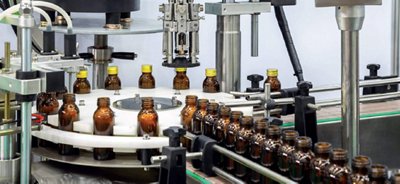The Hunt for the Missing Endotoxin
Is Outsourcing the Solution to Low Endotoxin Recovery (LER)?
February 05, 2021

This white paper reviews the causes contributing to low endotoxin recovery (LER), the impact it creates, as well as solutions which can rectify the issues it results in. We also discuss the advantages and disadvantages of developing your de-masking protocols in-house, and how you can use the ENDO-RS® de-masking tool kit to make the process easier from beginning to end.
Following this, we outline the pros and cons of outsourcing your de-masking project, what you should look for in a third-party company, and why you can and should trust bioMérieux with your de-masking protocol development.
INTRODUCTION
Without a shadow of a doubt, drugs are evolving. Consider, for example, how small molecules once dominated the pharmaceutical industry, yet today, there are increasing numbers of biologics such as antibodies and proteins on the market. Indeed, to date, there are over 400 recombinant therapies approved by the FDA, demonstrating how biologics provide advantages including increased efficacy and specificity, while reducing toxicity and the risk of adverse side-effects1,2.
Unfortunately, the processes used to produce stable biologic formulations often present a specific problem, namely that of endotoxin detection. Endotoxins are lipopolysaccharide molecules (LPS) from gram-negative bacterial cell walls that can cause severe immune responses in patients, resulting in sepsis, and even death3.
Endotoxin detection is an integral part of the drug quality control process, and all sterile pharmaceutical and medical device products that come in contact with a patient’s blood, or with cerebral or ocular fluids must be tested for endotoxins before their release. However, in some cases, the presence of masked endotoxins can render widely used endotoxin testing methods unreliable - a phenomenon known as ‘low endotoxin recovery’ (LER)3.
We spoke to our expert, Dr. Christian Faderl, to find out more about masked endotoxins and how pharmaceutical manufacturers can effectively tackle the problem of LER.
“LER is a big safety risk for patients, says Dr. Faderl: If a product has a LER issue, the endotoxin is hidden, so you can’t detect contamination during quality control. But masked endotoxins can still trigger an immune response."
MASKED ENDOTOXINS: UNDERSTANDING HIDDEN DANGERS
There are several methods currently available enabling testing for bacterial endotoxins: limulus amebocytelysate (LAL), tachypleus amebocyte lysate (TAL),and recombinant factor C (rFC).
However, all of these methods rely on a protein knownas Factor C, which binds with LPS molecules andsets off a reaction or cascade of reactions enabling endotoxins to be detected and measured. Significantly, Factor C is only activated by LPS in their natural, aggregated form.3,4
Manufacturing processes for biologics and final product formulations frequently require polysorbate surfactants to prevent protein aggregation, and chelating biological buffers to maintain an optimal pH. These ingredients are essential to ensure that biologics are stable, and able to maintain their structure and function. However, they can also break down the aggregate structure of LPS, which can completely disperse into monomers within a solution. This dispered monomers can no longer activate Factor C, and as such, remain undetected by endotoxin tests resulting in false negatives.4-6
Dr. Joseph Chen first reported LER at the PDA Annual Meeting in 2013. Dr. Chen showed that adding low levels of endotoxin to undiluted biologics could not be detected using the approved endotoxin testing methods. Since then, several further studies have demonstrated the effects of endotoxin masking and LER.7-10
PLEASE COMPLETE THE FOLLOWING INFORMATIONS TO DOWNLOAD THE WHITE PAPER AND READ THE FULL ARTICLE
